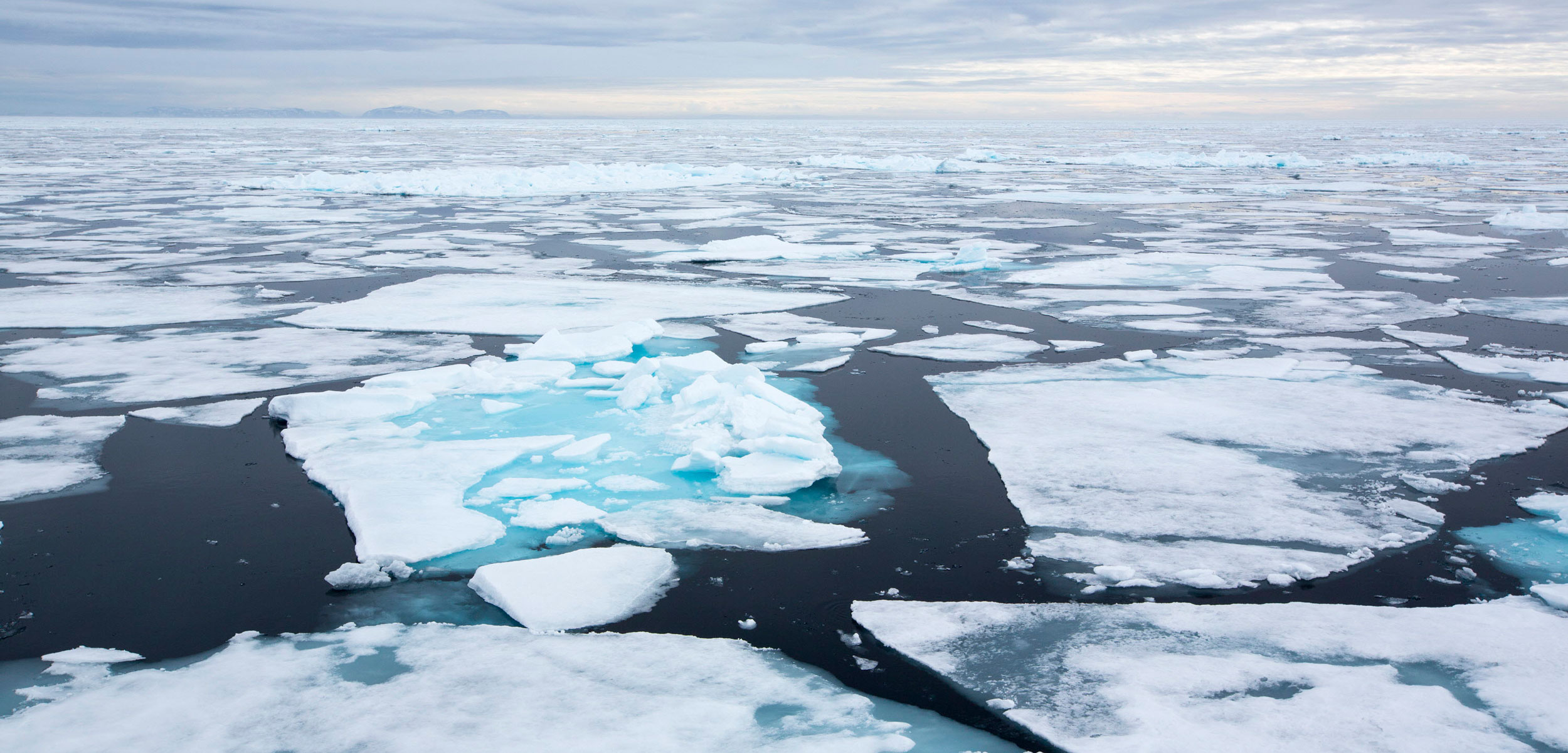Trawlers Are Pushing into the High Arctic
With sea ice melting, fishing looks set to continue its expansion into previously inaccessible waters.
Article body copy
As the extent of sea ice covering the Arctic Ocean shrinks, commercial trawlers are moving in, rapidly expanding fishing operations into areas previously covered by multiyear ice. If this trend persists, as new research suggests, fishing activity will spread along Arctic coastal shelves, with bottom trawling becoming a major threat to the Arctic’s rich and diverse ecosystems.
Per Fauchald, an ecologist at the Norwegian Institute for Nature Research, and his colleagues argue in a new study documenting the shift in fishing activity that, with the planet continuing to warm, Arctic coastal states need to take more responsibility to protect these vulnerable areas.
To track how the loss of sea ice has already changed Arctic fishing activity, the researchers compared data on commercial fishing from 2013 to 2018 with information on sea ice cover and ocean depth. Their analysis showed that trawling dominates Arctic fisheries, and has increased substantially in areas previously covered by multiyear sea ice. However, these trawlers are limited by depth, so activity is expanding along the continental shelves.
Using this knowledge and predictions of sea ice melt from a collection of climate models, the team calculated how fishing activity could look between 2040 and 2060. Trawling has already expanded into northern parts of the Atlantic and the Bering Sea. In the future, they predict that trawlers will push into the Chukchi Sea, which lies north of the Bering Strait between Alaska and Siberia; the coastal areas of Greenland; and eastern and northern Canada, including the Arctic Archipelago. These areas have historically been covered by extensive sea ice.
Fisheries catch data suggests that pelagic trawling is more common in the northern Pacific, while bottom trawling dominates in the North Atlantic. From an environmental perspective, bottom trawling is particularly problematic because as the nets drag along the seabed they stir up and redistribute sediment, physically damage seafloor structures, and ultimately reduce the number and diversity of bottom-dwelling creatures. In the high Arctic, benthic communities have historically been relatively undisturbed. These organisms play an important role in the larger marine food web, supporting huge numbers of whales and other animals. Disturbing them with trawl nets could have far-reaching consequences.
Murray Roberts, a marine biologist at the University of Edinburgh in Scotland who was one of the first to report on the direct physical impacts of trawling in the deep sea more than 20 years ago, says by email that he “find[s] it deeply concerning that as ice disappears this unsustainable method for catching fish is moving to new, highly vulnerable ecosystems.”
“It is really important that the Arctic coastal states start thinking about protecting these areas from fishing activities, particularly from bottom trawling,” Fauchald says. “I think that is essential if we are to have any hope of conserving some of these highly diverse and rich communities.”
Fauchald adds that a recently implemented international agreement, developed to temporarily suspend commercial fishing in the Central Arctic Ocean (CAO), does not address his concerns, because that agreement does not cover the areas he and his colleagues are worried about. “This is primarily because the CAO agreement covers the deep polar ocean and not the continental shelves where trawling eventually could increase,” Fauchald says.
Chris Yesson, at the Zoological Society of London in England, has seen changes like those discussed in the paper in Greenland where he studies the impact of trawling on benthic habitats. “The northern limit of the biggest fishery in Greenland, which is trawling for northern prawns—they trawl all along the west coast on the shelf of Greenland—has basically been creeping northward,” he explains.
This poleward shift is due to two factors, Yesson says: retreating sea ice means new areas are becoming accessible, and the prawns themselves are moving north as the water warms. “It’s not just about, Oh, there is a place we can get to,” says Yesson. “It’s also, I need to go there because the things I used to be able to catch further south have moved.”
A pragmatic approach is needed to tackle the issue, according to Yesson, as Arctic economies are heavily dependent on fishing. The prawn fishery he studies accounts for around half of Greenland’s exports. The key is to study and map areas that are at risk of new fishing, Yesson says, so that vulnerable habitats that need protecting can be identified, and decisions can be made about where to allow fishing. This is also important for the fisheries because those undisturbed areas serve as nurseries and feeding grounds.

